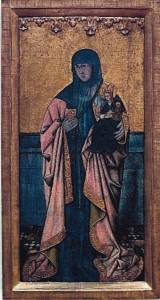Colourful History of Crusader Church of St.Anne
The Church of St. Anne is a Roman Catholic church, located at the start of the Via Dolorosa, near the Lions’ Gate and churches of the Flagellation and Condemnation, in the Muslim Quarter of the old city of Jerusalem.
The current church was erected near the remains of an earlier Byzantine basilica, and over the site of a grotto believed by the Crusaders to be the birthplace of Saint Mary mother of Jesus. The church is dedicated to Anna and Joachim, who according to tradition lived here, and the site where their daughter, the Virgin Mary, was born in a cave which is located under the basilica .
The church was completed in 1138 by Arda, widow of Baldwin I, the first titled king of Jerusalem. The earlier Byzantine basilica had been built over what remained of a pagan shrine to either the Egyptian god Serapis or the Greek god Aesculapius, both gods of healing.
Unlike many other Crusader churches, St. Anne’s was not destroyed by the Mamelukes who captured the Holy Land in the twelfth century. In 1192, a year after his conquest of Jerusalem Saladin converted it into an Islamic seminary, noted by the Arabic inscription Salahiya (of Saladin) above the entrance.
Saladin converted it into an Islamic seminary, noted by the Arabic inscription above the entrance.

This statue is in the Church of St Anne in the Old City of Jerusalem; on the traditional sitre of the home of Mary's parents, Anne and Joachim
During the Muslim rule of Palestine, Christian pilgrims were only permitted inside the grotto after paying a fee. Eventually the church was abandoned and fell into ruin. In 1856, in gratitude for French support during the Crimean War, the Ottoman Sultan Abdülmecid I presented it to Napoleon III. It was subsequently restored, but the majority of what remains today is original. Currently St. Anne’s belongs to the French government and is administered by the White Fathers, an order of the Catholic Church named for the colour of their robes.
The French flag now flies over the building indicating its recent history and restoration by the French.The beautiful statue of the seated St Anne with Mary is part of the modern French Restoration, and is in stark contrast to the medieval portraits of St Anne.
The study by Pere Girard on this page dates from 1470, with its traditional iconic colours, and has more ‘theology’ than the more spare modern lines of the Jerusalem St Anne.
Girard the Valencian painter included Catalan elements in his work such as the embossed Arabic symbols which appear on the border of St Anne’s garment, alongside the traditional colours, red symbolising divine love and green immortality.The arms of both mother and daughter serve as thrones for their respective offspring. Annes wimple is that of everyday women, whereas the Virgin is crowned as Queen of Heaven. Her son carries the orb of sovereignty, his right hand raised in the the traditional gesture of blessing.
St Anne is always honoured liturgically as a couple with her husband St Joachim as Parents of Mary on 26 July. This feast is an occasion to honour grandparents who have an increasing role in bringing up grandchildren. Joachim and Anne do not appear in Scriptures, but are firmly grounded in Tradition and in the hearts of Christian Communities.
Sources: Pat McCarthy, Wikipedia.


 Entries(RSS)
Entries(RSS)